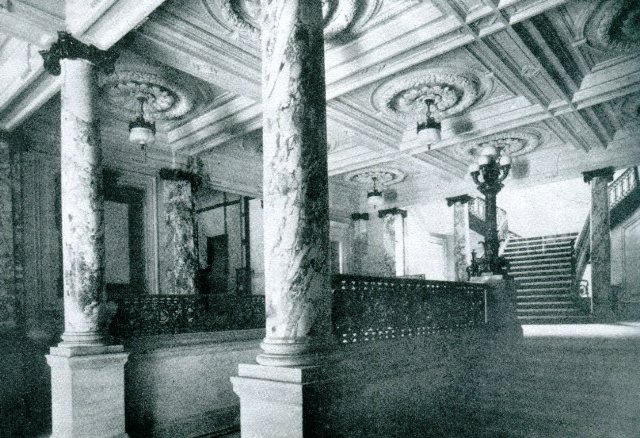4
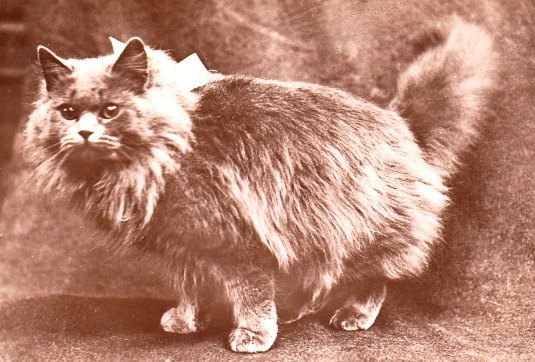
This is not Homicide, but he looks the part.
Homicide sauntered into the New York City Police headquarters building at 240 Centre Street sometime in January 1934. The large black cat with translucent green eyes and prominent whiskers couldn’t have chosen a more magnificent place to work and live.
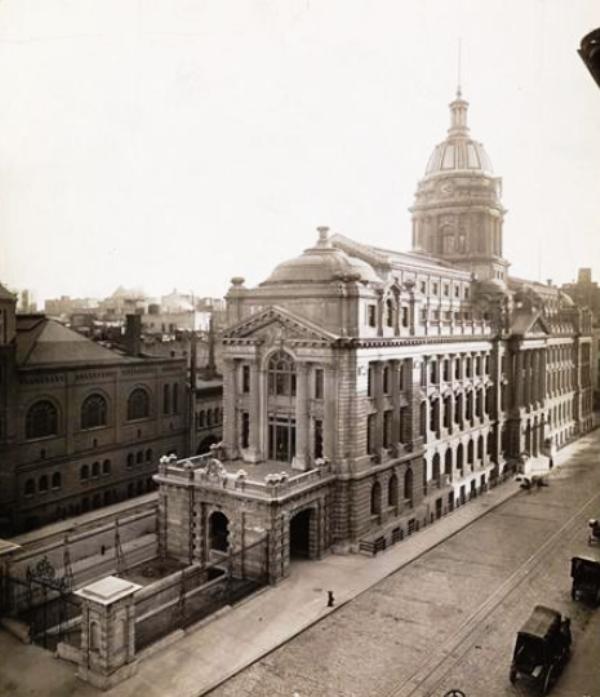
The
monumental Beaux-Arts style building, which opened in 1909, featured a
grandiose entrance hall and such amenities as a basement shooting range
and printing center, carpeted offices for the commissioner and officers
on the second floor, third-floor library, fourth-floor gymnasium with
drill room and running track under the roof dome, fifth-floor radio
broadcasting station and telephone exchange (formerly a telegraph
bureau), and a rooftop observation deck. Museum of the City of New York
For the one thousand or so men attached to police headquarters, Arson’s departure was not a mournful event. You see, Arson was more like a Keystone Cat who was simply not cut out for the job. Although Arson loved his beat, he never made a collar. What he did make was noise – so much so, that even when he walked on carpeted floors the mice could hear him in time to scamper away to safety.
“And that’s why we called him Arson,” Lieutenant James R. Smith told reporters from The New York Times. “He was all burned up because he never caught a mouse.”
Homicide, on the other hand, was very light on his feet. He was also a very conscientious police cat, always starting his beat every night at 6 and covering every mouse hole from the basement to the roof. He may not have attended police academy, but he did have great respect for the Police Rules and Regulations book – he often took cat naps on top of the great book.
Down in the cellar Homicide would search all the prisoner cells, and from there he’d move up to the first floor, where he would search the safe, squad rooms, Bureau of Criminal Identification, and Criminal Alien Bureau. And, unlike Arson, who simply passed up a room if he couldn’t get in, Homicide would stand in front of every locked door and give his best police whistle meow until one of the sergeants came to assist him.
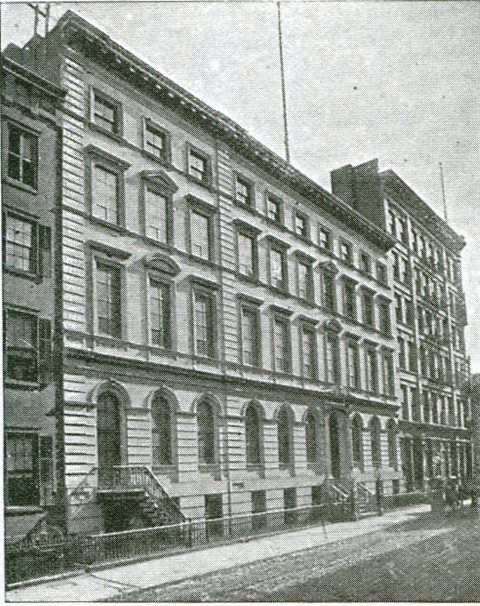
The
5-story, 90-foot-wide police headquarters building at 300 Mulberry
Street was constructed of white marble and pressed brick with white
marble trimmings. The building was erected in 1862 and first occupied in
1863.
On one particularly warm night in July 1934, Homicide ambled down to the cell blocks, where a few prisoners were drowsing in the heat. He quietly perched over a particularly dangerous mouse hole, narrowed his eyes, and patiently waited for the perp to appear. When it did, he leaped at the good-size mouse and captured the convict in his jaws.
As the prisoner struggled to escape, Homicide ran up the stairs to the first floor, sprinted down the corridor, and jumped up onto the main desk, where Lieutenant Smith was sitting. He dropped the exhausted prisoner on the desk blotter, gave Smith a salute with a nod of his head, and ran back down to the basement to continue his beat.
“I’ve seen them come and go, in my time, but never before a cat that brings ‘em back alive and books ‘em,” Smith told the news reporters. “I’m recommending a citation for an extra ration of liver. Homicide’s a first-grade cat, from now on.”
Centre Market and the New York City Police Headquarters
Arson and Homicide were no doubt two of the most fortunate police cats in the history of the feline force. Not only did they get to live in police headquarters, but their beat was immense, with enough rooms and hiding places to satisfy any cat’s curiosity. Consider that today movie stars like Leonardo DeCaprio and Cindy Crawford are paying millions of dollars to live in one of the luxury condos in the renovated building – now called the Police Building Apartments.
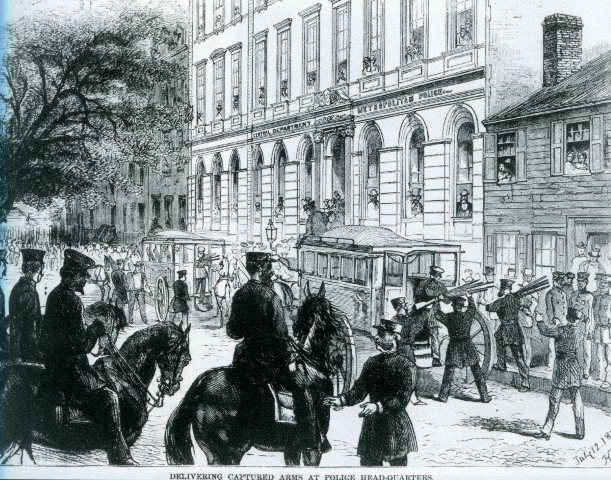
The police headquarters on Mulberry Street had to be protected with a strong militia during the Orange Riots of 1871.
In 1857, headquarters were established at 88 White Street, and six months later, at 413 Broome Street. In 1863, the department took possession of its new headquarters at 300 Mulberry Street.
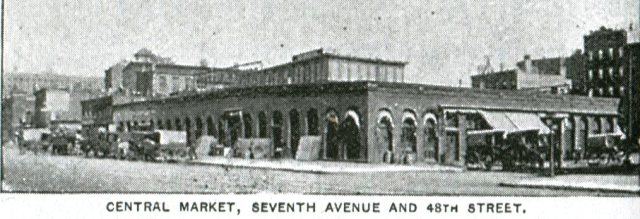
Police
Commissioner Partridge wanted to build a new police headquarters on the
site of the Central Market, a large meat and produce market bounded by
Broadway, 7th Avenue, West 47th and West 48th Street.
In September 1902, Police Commissioner John N. Partridge suggested the site of the Central Market on 7th Avenue between West 47th and 48th Streets for a new police headquarters building. But one month later, Chief Engineer Eugene E. McLean of the Department of Finance submitted a report on the decrepit condition of the public markets in Manhattan. In this report, he recommended demolishing the Centre, Clinton, Union, Tompkins, and Catharine markets. McLean also suggested constructing the new police headquarters on the site of the old Centre Market, which was located on a large triangular lot on Centre Street between Broome and Grand streets.
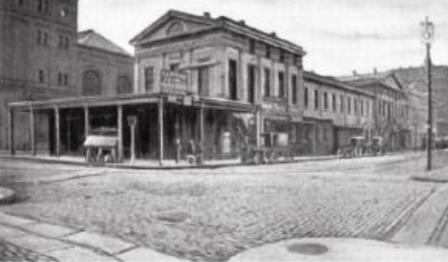
The
Centre Market derived its fame from being the only centrally located
market in the city. This original Greek-Revival building was expanded in
1822, and again in 1826 and 1831.
In 1812, a proposition was made to establish a public market on a site located between Orange (Central Market Place) and Rynders Street (Centre Street), facing Grand Street. Located on what was once the Nicholas Bayard farm, this site was formerly known as Bayard’s Mount, as it was the highest and steepest elevation on the south end of Manhattan island. During the early stages of the American Revolution, the elevated land was fortified and called Bunker Hill.
The proposition was tabled due to the War of 1812, but in July 1817 the city purchased the lot from Morris Martin for $5,000. A market house, measuring 80 by 25 feet, was also planned at an estimated cost of $1,000. The market opened in November 1817, and the 14 butchers holding stands at the Collect Market (located between Broadway, Cortlandt Alley, and Walker Street) transferred to the new Centre Market.
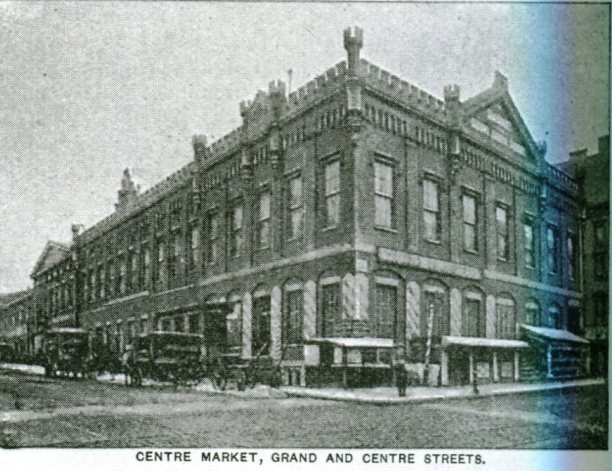
On
January 17, 1839, the $140,000 Centre Market opened with a grand ball
and supper given by the butchers in the large upper rooms. These room
would later become a drill hall for the military. Museum of the City of
New York Collections
Upstairs from the market stalls was a large drill room for the Seventh Regiment (until it relocated to the Central Park Arsenal in 1848), and later, for the Sixth, Eighth, and Seventy-First Regiments. Up until about 1857, several upper rooms were also occupied as a station house for the 14th Patrol District (later the 14th Police Precinct).
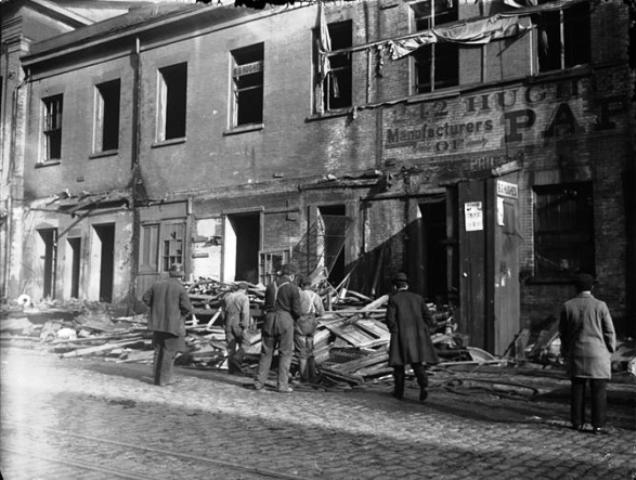
Paper box manufacturer and grand prankster Brian G. Hughes
was leasing part of the Centre Market when it was purchased by the city
for the police department. Here, his section of the market is being
demolished in preparation for the new construction. Museum of the City
of New York Collections
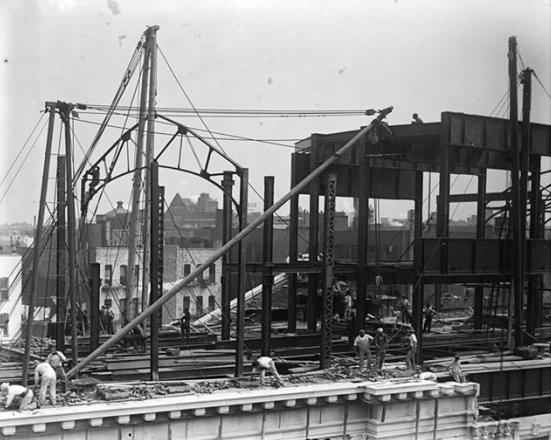
The
top floor of the police headquarters building at 240 Centre Street was
constructed in 1906. The opening of the new building was delayed by
construction of the Lexington Avenue subway, which runs directly under
it. Museum of the City of New York Collections
Theodore Roosevelt, a former police commissioner, reportedly laid the cornerstone for the new headquarters, and, six years later, in November 1909, the transition from Mulberry Street to Centre Street began.
Police Commissioner William F. Baker formally opened the new police headquarters building at midnight on November 29, 1909. His first act was to press a key that switched all the telegraph and telephone lines from the old building at 300 Mulberry Street into the telegraph bureau on the fifth floor of the new building.
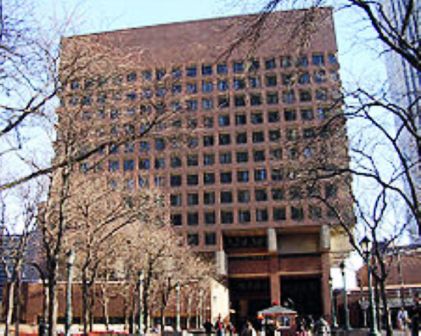
The boxy One Police Plaza looks more like a dormitory building one would see on a college campus.
By 1929, New York City Police Commissioner Grover Aloysius Whalen was already complaining about the 20-year-old building, saying he wanted to replace it with a bigger place – perhaps a skyscraper, about 20 stories tall. It would be another 44 years before he got his wish, and the new headquarters were six stories short of his ideal.
In 1973, the New York City Police Department moved to One Police Plaza, a red-brick box on Park Row near City Hall and the Brooklyn Bridge. The glorious old headquarters building sat empty for years until finally, in 1983, the city accepted the proposal of developer Arthur Emil to turn it into luxury condominiums. Emil paid the city $4.2 million and spent another $20 million on renovating the building.
Today the building has 55 high-end condos, including one of the most unique residences in New York City: the 10-room apartment in the former gymnasium. Click here for a look at this spectacular unit, which hit the market a few years ago for $14.5 million. Or, take a look at a few other apartments for sale.
I think all that’s missing from these condos are a few good police cats, like Homicide and Arson.
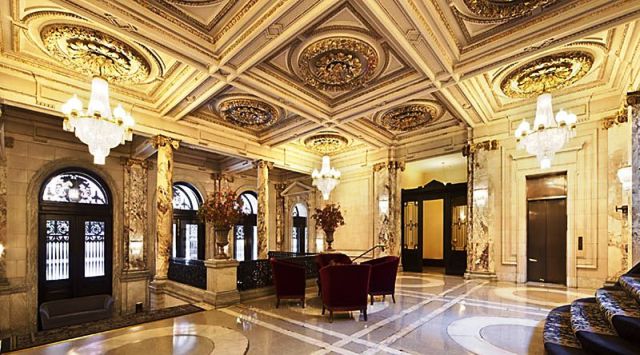
The
grandiose entrance hall of the old police headquarters has been
preserved and restored, but most of the interior was gutted and redone.
Today, residents of 240 Centre Street — aka Police Building apartments
— have access to several luxury amenities, including a 24-hour doorman,
concierge, fitness center, and large, private garden. Pets, including
cats, are allowed.
